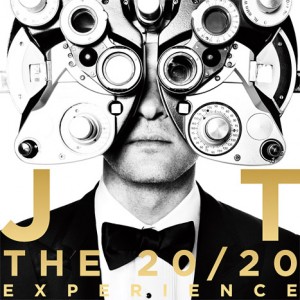
I was listening to Justin Timberland’s Mirrors the other day and at the 2:03 mark, something weird happens. It’s as if the song suffers a sudden loss of blood pressure.
The tempo so far has been driven by a calm but persistent momentum. A horse traveling at a canter, leisurely but insistent, the base line supplied by instruments and voices.
And then the momentum suddenly glides! The baseline stops. At 2:03 strings come in and fall away. And you think they are going to keep falling until strings come in again at 2:04. Between 2:03 and 2:04, there’s free fall.
It feels like the song is over. Then those second strings come in, just in time, to catch the song and prepare for a return to canter.
Not quite a resurrection. More like a save (in the baseball sense of the miraculous catch).
It’s hard to see what this intrusion means for Mirrors. The first time I heard it, it seemed to me that the song was wheeling (as trains do) and now moving off in a new direction. But Mirrors comes out of this swoon the song it was going in. Nothing has changed. (Unless I’m missing something. You can tell that I don’t know anything about music. So something might have changed and I can’t see it.)
I might have ignored this aspect of Mirrors, except that it reminded me of the music that accompanies a recent Microsoft ad. This is Labrinth’s Express Yourself. This is a good natured, peppy, confessional little song that comes with an admonishing chorus: Express yourself!
No sooner has this chorus started than (at 0:54) it sounds like a Paris ambulance has decided to take a short cut through our “listening experience.” Klaxon blaring! Get out of the way! This is an emergency!
It’s glorious, great confusion, as the song has suffered a blowout, lost its stability and fights now to get things back under control. Express Yourself on two wheels! Look out!
Popular music has often cultivated this conceit, that it is a lord of misrule capable of summoning terrible confusions and disorders. In fact, “Look out!” is exactly what guitarist sometimes mutter at the beginning of a solo, as if chaos were now to be unleashed. I am not always buying it, but I am usually charmed. “A” for effort and grandiosity.
Again, it’s not clear what the Paris ambulance adds to the song. It sounds out of place. Not quite in error. Not entirely apt.
And this reminded me of that moment in Beyonce’s Single Ladies (Put a ring on it) where we get (at 0:52) what struck on first hearing as “dread chords.” They come in like a low pressure zone, dark, menacing, and if this weren’t a pop song, majestic.
These three things are anthropologically obvious…or at least probable.
1) That music is one of the most cultural of cultural artifacts. What works in one culture is strange and unpleasant in another. We are extremely particular about what we like and what we don’t.
2) That music is rule bound. The rules specify, among other things, how sounds should be chosen and combined. Some selections and combinations are so conventionalized, they become genres. But what confines some artists frees other, and part of the fun of musical creativity is seeing what an artist can make these rules do, by stretching them to the breaking point and in some cases deliberately violating them. This is what keeps music “fresh.”
3) Some of the rules of music call for “harmony.” Some sounds go together, some do not. It’s a largely arbitrary arrangement. It varies between communities and it changes over time. But at any given time for any given group, the rules say some sounds go together more surely than others.
And what we are looking at in the case of Timberlake, Labrinth and Beyonce are sounds that so clearly don’t go with the surrounding sounds that they seem to qualify as intruders. They remain separate and different. They are passengers. Stowaways even.
The simplest explanation for these dark passengers is that they are post hoc efforts to give the song additional depth and credibility. The artist says, “oh, God, we’ve gone too far. This is bubble gum. Do something!” And faithfully, the tune smith or the producer comes up with a sound that “runs against type” as we used to say of casting Broadway or Hollywood actors.
But I think there’s another explanation. Or, better, I wonder whether we should search for the explanation elsewhere. I wonder if culture, and in this case pop culture, is changing. Changing so much that unitness is breaking down. Cultural rules once said what a unit was and how to constitute it, not least how to specify what goes in a song and what does not. This is what gave a song its “thingness.” This is what allowed the artist and the listener to agree that, yes, this is a song.
If its possible now to smuggle music into a song that doesn’t quite go, well, that would be interesting. After all popular culture has been ruthlessly crafted. Artists are controlled by conventions and producers who are controlled by genres and labels who are controlled by sales numbers. Even in an era of indie and alt musical producers, music is crafted quite carefully. Rules are honored. Conventions play out.
But if an artist/producer/label can now allow dark passengers, musical moments that are not just cast against type, but markedly different in tone and character, then what we call a “song” is changing. And if that’s changing, well, think what else must be changing.
Post script:
On changing in music and the music biz, see the remarkable work being done by Leora Kornfeld over at Demassed.
Like this:
Like Loading...




